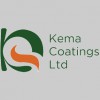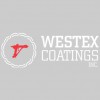
Every thin film deposition system we build represents who we are, is created with the best components available, and is engineered to perform consistently for years to come. Angstrom Engineering is the industry leader in PVD (physical vapor deposition) and CVD (chemical vapor deposition) coating equipment, and everyone at Angstrom Engineering is driven by one thing: creating the PVD and CVD systems that you need and making it easy for you to use.
We work with many world-class innovators like you. An Angstrom CVD or PVD system in your lab makes us partners. We take that relationship seriously, and we will provide as much technical support as you will need. Josephson junctions form the heart of the superconducting quantum bit. We have fashioned a series of deposition/oxidation platforms that fabricate junctions in a reliable, automated framework.
We work with many world-class innovators like you. An Angstrom CVD or PVD system in your lab makes us partners. We take that relationship seriously, and we will provide as much technical support as you will need. Josephson junctions form the heart of the superconducting quantum bit. We have fashioned a series of deposition/oxidation platforms that fabricate junctions in a reliable, automated framework.
Services
Angstrom Engineering was founded in 1992 and has quickly grown into a thriving international company with an established reputation for providing high-quality machines and unparalleled customer service. Our PVD (Physical Vapor Deposition), and CVD (Chemical Vapor Deposition) systems are created by our skilled and experienced engineering team.
Our Service Team is committed to providing you with the solutions to keep your equipment running smoothly. If you would like to contact our Service Team, please call us at the number below. Utilize the value of precious material deposited on sources, shielding, spent targets, and flaked in and around your system.
Sputter deposition of insulating materials cannot be done with DC power. Materials such as oxides, nitrides, and ceramics have very large DC impedance and require prohibitively high voltages to ignite and maintain a plasma. Luckily, the impedance of these materials changes with the frequency of the applied power.
HIPIMS is a sputtering technique that builds upon the advantages of conventional magnetron sputtering. In magnetron sputtering, increased plasma densities are created near the target that boost the sputtering rate beyond that of traditional diode technology. The plasma density could be increased further with a higher rate of power applied to the cathode; however, dissipating the heat generated from these processes prohibits any practical use.
Linear magnetron sputter systems are designed both for thin films of semiconductors or metals on large area panels as well as for production throughput requiring a high rate of deposition on a quantity of samples. The strategy is most commonly used in display, photovoltaic, and semiconductor applications.
Reviews (1)
Maikel Rheinstadter
Feb 10, 2018
Report



